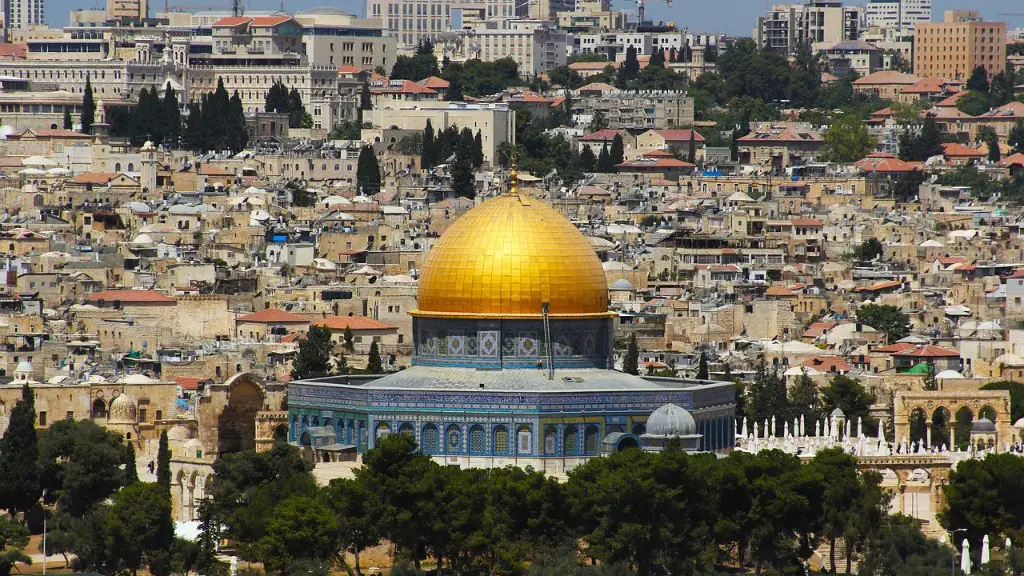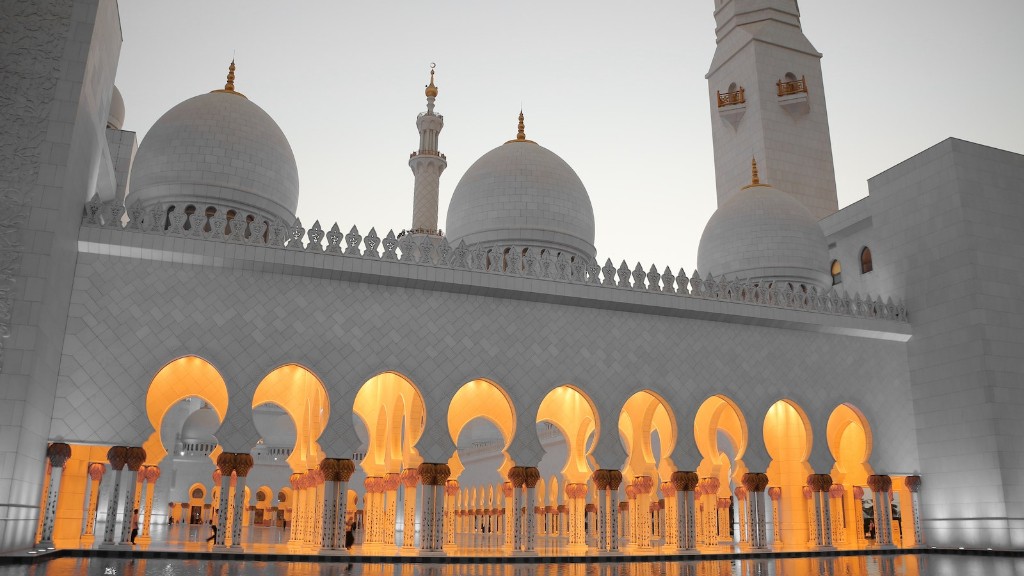What Is Mukti in Hinduism
Mukti, or liberation, is a major religious concept in Hinduism which speaks to the core of its spiritual teachings and beliefs. According to Hindu ideas, every human being goes through numerous lifetimes of transmigration and suffering in a cycle known as samsara. It is the purpose of each person to break free of the cycle, and the concept of mukti has developed around this need.
The Hindu scriptures, known as the Upanishads, mention mukti as one of the three goals of human effort. The other two being artha, which is the acquisition of wealth, and kama, which comprises pleasurable pursuits. Mukti, however, is considered to be the highest goal as it offers life’s ultimate freedom from the agonizingly recurring cycle of samsara. Ultimately, mukti gives the devotee unending bliss and a kind of unity with the divine.
Moksha can be achieved by both meditation and actions. Every Hindu philosophy has advocated the mastery of certain practices. Some of these practices are part of the main Hindu discipline of yoga, which is said to minimize the attachments of the soul with material possessions and activities, thus helping an individual take spiritual pursuits further.
The means of achieving moksha are studied in opposing school of ideologies: Vedanta and Kashmiri Shivism. Vedanta asserts that knowledge frees an individual from the pain of samsara, while Kashmiri Shivism believes that devotion to a deity, such as Shiva, is the path to moksha. Nonetheless, the two major philosophies are used together in some contexts, leading to the common idea that both knowledge and devotion are important.
To understand the importance of mukti, it is also helpful to look at it from the context of death. In Hindu spirituality, death marks the end of a person’s earthly relationships, and the start of a journey towards spiritual freedom. The philosophy holds that upon death, the soul travels to the afterlife, and if enough spiritual merit has been earned from this lifetime, mukti will be achieved upon reaching the afterlife.
Mukti allows a person the ultimate freedom from the repeated cycle of birth and death. But, to maintain philosophical clarity and avoid confusion, one must remember that attaining mukti is not about breaking out of this world and reaching heaven, or going to any physical place. Rather, it is about transforming one’s consciousness and merging with the souls of the universe.
Karma & Mukti
It is believed that to achieve mukti, humans need to accumulate spiritual merit called punya. Punya is created by performing rituals in accordance with the sacred texts. This is called karma-kanda and karma-yoga, which translates as ‘path of action’.
A spiritual practitioner must work on their inner self, by meditating and achieving spiritual knowledge to become free of materialistic wants, achieved through karma-yoga. The goal of karma-yoga is to attach oneself to the spiritual and renounce the materialistic aspects of life. The goal of this yogic practice is to reach the point of Mukti in which one is finally free of the material desires, free of the cycle of births, and of attaining a spiritual union with the divine.
The notion of punya is important as it is through it that one is able to attain mukti. Hindu scholars explain that the force of punya is most effective if it comes from virtues such as truth, consideration for others, and kindness. In this way, punya is a force for good, allowing an individual to escalate towards their spiritual path and eventually achieve moksha.
Ultimately, mukti is a powerful concept in Hinduism and its ultimate goal. Attaining mukti is said to be incredibly difficult, yet, for devout Hindus it is essential for liberation from suffering and material life. It requires a connection with one’s true atman, and a practice of meditation, as well as the accumulation of spiritual merits and virtues throughout life.
The Bhagavad Gita and Mukti
The Bhagavad Gita is one of Hinduism’s most important scriptures, and it speaks to the concept of Mukti. The text is believed to be an expansion of the Vedas, and provides important insights into the steps necessary to reach mukti.
The Bhagavad Gita states that the best way to attain mukti is by performing one’s own dharma, or religious duties. It emphasizes that, in order to reach the ultimate state of liberation, one has to pursue their life with courage, nobility, and goodness. It breaks from traditional concepts to suggest that the attainment of punya, or spiritual merit, is achieved through divine intentions and actions, rather than simply following what is prescribed by religious law.
The Bhagavad Gita also discusses the yogic practices necessary for achieving mukti. It states that one must keep in mind the inner spirit, or atman, and act on one’s divine essence if one wants to truly reach a state of liberation.
Still, the text speaks to the difficulty of attaining the highest state of mukti. It explains that, because of the distress of the material world, it is impossible to reach one’s inner spiritual being while in the physical world. It states that only those who have managed to master their passions and entanglements with the physical world can make progress towards mukti.
The Vedic Paths & Mukti
The Vedas, or the ancient Hindu scriptures, provide different pathways to mukti. It is believed that there are three paths to liberation that are outlined in the Vedas; karma-yoga, jnana-yoga and bhakti-yoga.
Karma-yoga invokes service and sacrifice to achieve liberation. Jnana-yoga, on the other hand, encourages the pursuit of knowledge and understanding of the inner self to reach mukti. Finally, bhakti-yoga is the practice of total surrender and devotion to one’s chosen deity.
The Vedas also provide descriptions of the bliss of mukti, suggesting that it can be attained by meditation, renunciation and purification of one’s thoughts and feelings. It explains that, while the practice of yoga allows an individual to make progress towards mukti and ultimately gain liberation, the process is long and arduous and that the person has to strive relentlessly to become liberated.
The Vedas, therefore, emphatically point out that spiritual practices are the major and most effective way to moksha. As such, it is important for devotees of Hinduism to read and study these scriptures in order to become aware of all the teachings of mukti and have a successful journey to ultimate liberation.
Mukti in Buddhism
Mukti is also an important concept for those in the Buddhist faith. Like Hindus, Buddhists seek the inner peace and harmony that comes from liberation. However, their views of mukti differ slightly and their teachings center around the concept of nirvana or enlightenment instead.
Nirvana is, in a sense, the Buddhist equivalent to mukti. Both practices, while seemingly distinct, share a similar goal — to be free from worldly suffering. Nirvana can be achieved by means of meditation and inner focusing, as well as service to others, contemplation of the dharma, and by developing wisdom and insight.
Overall, Buddhists seek to release their ego, transcend the material world and its desires, and become enlightened. They strive to move away from attachment, hate, and cravings, and focus on living a life of peace and wisdom. Ultimately, Buddhism—like Hinduism—focuses on the idea that one should transcend the world of suffering by achieving a state of inner peace and awareness.
Transcending Suffering & Mukti
Achieving mukti through Hinduism is a complex and spiritual process. While it is difficult to attain, and not every Hindu will reach mukti or liberation in their lifetime, the promise and possibility of attaining it makes it a worthwhile goal nonetheless.
Mukti stands out amongst Hindu beliefs and ideologies as a spiritual practice that is believed to allow a person to move beyond physical pain and suffering, and directly transcend towards their inner self to find true fulfillment. It is an important practice for Hindus and Buddhists alike, allowing adherents to break out of difficulties, strive for knowledge, perform good deeds and ultimately move towards the freedom of the soul.
Self-Realisation & Mukti
Once the teachings of mukti are understood, and the soul can be properly seen, a more profound understanding of self is gained. The Hindu faith stresses that the soul must be freed from its materialistic bonds in order for one to reach moksha. In this sense, mukti is an important part of true self-realisation.
Mukti is seen as a true transformation of the self, and helps a practitioner to uncover deeply stored spiritual desires and Self. It helps an individual to throw away the mundane aspects of life, and explore the feelings of peace and unity that come with true liberation.
Ultimately, mukti provides the ultimate freedom from the pains and sufferings of the material world. The teachings around mukti and the stories of those who have attained it, show that a devotional life can lead one to the heights of spiritual release. Mukti is the hope and goal of the highest devotees of both Hinduism and Buddhism, allowing them to merge with the divine and break the cycle of birth and death.

